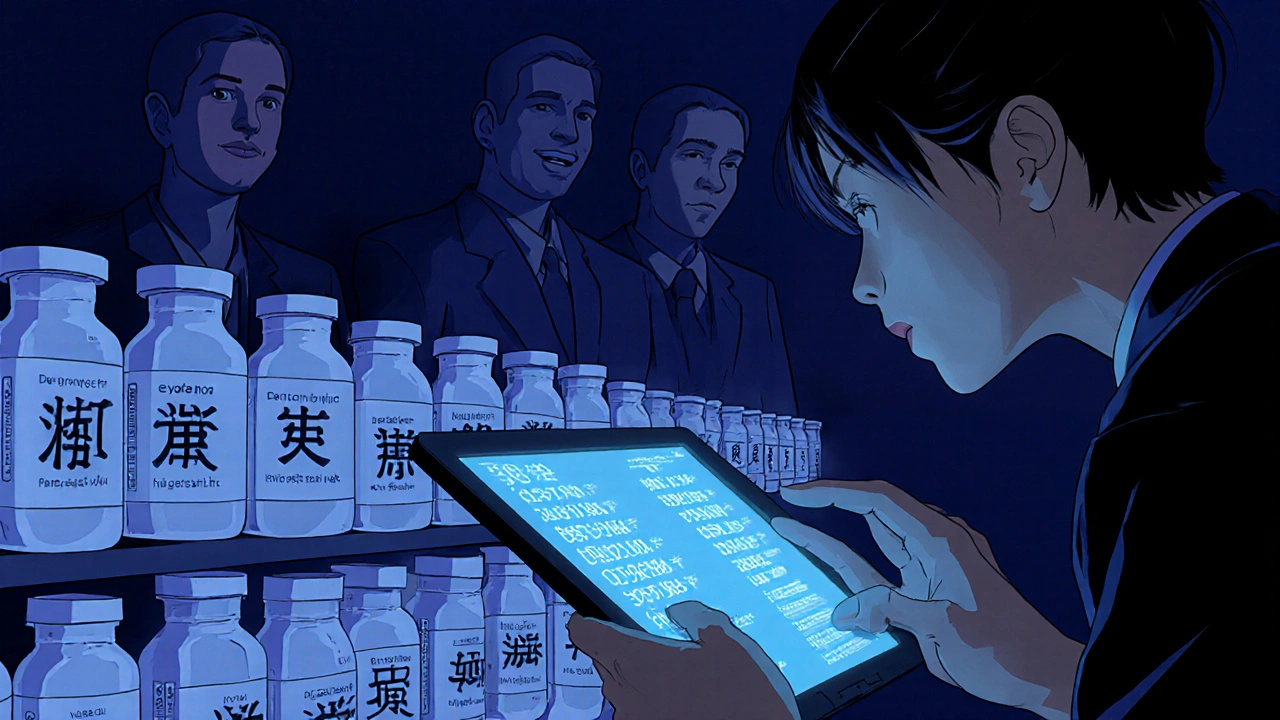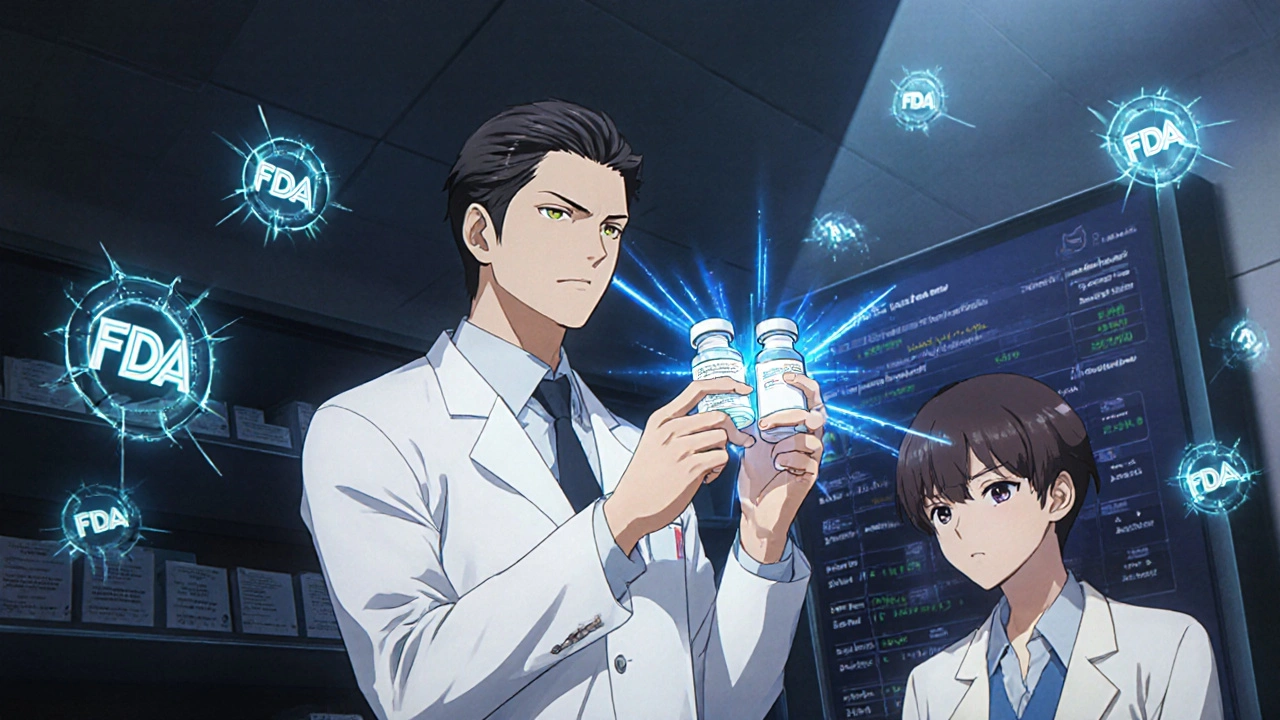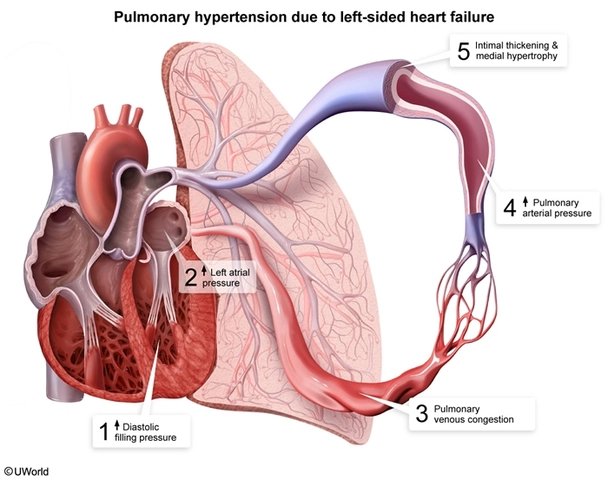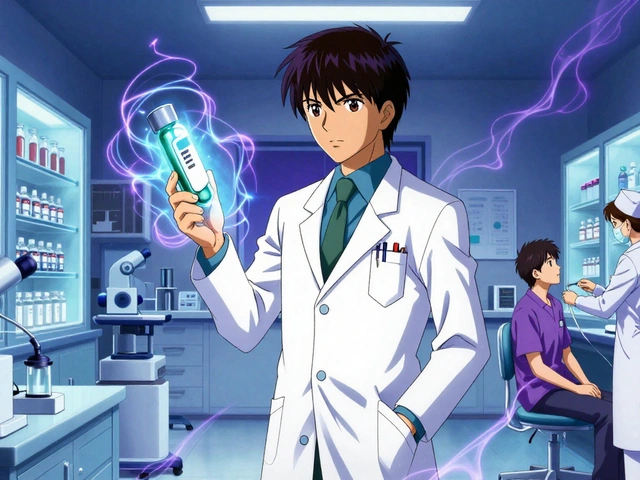When a patient walks into the pharmacy with a prescription for a biologic drug like Neulasta or Humira, they’re not just getting medicine-they’re stepping into a complex system of science, regulation, and trust. And the pharmacist? They’re the one who holds it all together.
What Makes Biosimilars Different from Generics?
People often think biosimilars are just like generic pills. They’re not. A generic version of a drug like lisinopril is chemically identical to the brand name. It’s made in a lab with exact formulas. Biosimilars? They come from living cells-yeast, bacteria, or mammalian cells. Even small changes in the process can lead to tiny structural differences. That’s why the FDA doesn’t call them "identical." They call them "highly similar." And crucially, they must show no clinically meaningful difference in safety, purity, or potency compared to the original biologic.
This isn’t semantics. It’s science. And it changes everything about how pharmacists handle them. You can’t just swap a biosimilar like you would a generic. There are rules. There’s paperwork. And there’s patient fear to overcome.
Interchangeable vs. Non-Interchangeable: The Key Distinction
Not all biosimilars are created equal. The FDA has a special designation: interchangeable. This means a pharmacist can substitute it for the original biologic without asking the doctor-just like a generic. But as of late 2023, only a handful of biosimilars have earned this status. Most still require the prescriber to explicitly allow substitution.
Why does this matter? Because if a biosimilar isn’t interchangeable, the pharmacist can’t switch it without calling the doctor. That creates delays. It adds work. And it often means the patient ends up with the more expensive brand-name drug-even if the biosimilar is cheaper and just as safe.
That’s where pharmacists step in. They don’t just fill prescriptions. They push for change. They educate. They advocate.
Why Pharmacists Are Leading the Charge
Doctors are busy. Nurses are stretched thin. But pharmacists? They’re the ones holding the medication records, reviewing the formulary, and talking to patients daily. A 2022 study in the Journal of Managed Care & Specialty Pharmacy found that 87.3% of pharmacists recommended biosimilars to patients-compared to just 62.1% of physicians. Why? Because pharmacists get the training. They attend CEUs on biosimilars. They read the data.
At the US Oncology Network, when they shifted substitution decisions from doctors to pharmacists, adoption of the pegfilgrastim biosimilar jumped overnight. Before, doctors had to approve every switch. After? Pharmacists reviewed the chart, confirmed the patient was stable, and swapped it automatically. Daily interruptions dropped. Costs fell. Patients stayed on therapy.
It wasn’t magic. It was structure. They trained every provider. They got written consent. They built a workflow. And they didn’t just rely on policy-they used data.

How to Counsel Patients Without Scaring Them
Patients hear "biosimilar" and think "cheap version." They worry it won’t work. Or worse-they think it’s unsafe.
Here’s what works: start with facts, not jargon.
- "This medicine is approved by the FDA as highly similar to the original. It works the same way in your body."
- "Thousands of people have used it. The data shows no difference in how well it works or how safe it is."
- "The only real difference? It costs less-so your insurance pays less, and you pay less too."
One pharmacist in Sydney told me about a patient on a biologic for rheumatoid arthritis who refused to switch. "I’ve been on this for five years. Why change?" she asked. The pharmacist didn’t argue. He showed her the FDA’s 9 Things to Know About Biosimilars. He pulled up the clinical trial results. Then he said, "If this wasn’t safe, they wouldn’t let us give it to you. But they do. Because it’s proven."
She switched. And stayed on it.
But it’s not just about trust. It’s about appearance. If the pill changes color, shape, or size-even if it’s the same drug-patients are 21% more likely to stop taking it. That’s why pharmacists must explain packaging changes before the patient even gets home. A quick note in the bag. A verbal heads-up. It makes all the difference.
The Legal Patchwork: State Laws and Substitution Rules
In Australia, pharmacists have broad authority to substitute biosimilars under the Therapeutic Goods Administration guidelines, as long as the product is approved and the patient is informed. But in the U.S.? It’s a mess.
As of October 2023, 48 states have laws about biosimilar substitution. But the rules vary wildly. Some require the prescriber to opt out. Others require the pharmacist to notify the doctor within 24 hours. A few demand that the patient sign a consent form. And only a handful allow automatic substitution for interchangeable biosimilars without any extra steps.
That’s why pharmacists need to know their state’s law-cold. One wrong move, and you’re risking liability. Or worse-you’re denying a patient a cheaper, equally effective option.
And then there’s traceability. Every biosimilar must be tracked by batch number. Why? Because if something goes wrong-say, an unexpected immune reaction-you need to know exactly which version the patient got. That’s not just good practice. It’s required.
Why This Matters for Costs and Access
Biologics make up only 2% of all prescriptions in the U.S.-but they account for nearly half of all drug spending. That’s not sustainable. A single course of Humira can cost over $20,000 a year. The biosimilar version? Around $6,000. That’s a 70% drop.
When pharmacists actively promote biosimilars, savings add up fast. At US Oncology, switching just one drug-pegfilgrastim-to its biosimilar saved the system over $1 million in the first year. Multiply that across dozens of biologics, and you’re talking billions.
But cost isn’t the only win. It’s access. Many patients can’t afford the brand-name drug. Without biosimilars, they skip doses. Or skip treatment entirely. Pharmacists who push for substitution aren’t just saving money-they’re saving lives.

What Pharmacists Need to Succeed
It’s not enough to know the science. You need systems.
- Get trained. Take CEUs on biosimilars. The FDA, ASHP, and ISOP offer free resources.
- Know your state’s substitution law. Bookmark it. Review it quarterly.
- Build a checklist: Is the biosimilar interchangeable? Is the prescriber okay with substitution? Has the patient been counseled? Is the batch number recorded?
- Partner with your pharmacy benefit manager. Ask them to simplify prior auth forms for biosimilars.
- Document everything. In the EHR. On the label. In the patient’s file.
And don’t be afraid to push back. If a doctor refuses to allow substitution without a good reason, ask why. Show them the data. Share the patient stories. Sometimes, they just haven’t heard the full picture.
The Future Is in Your Hands
Biosimilars aren’t the future. They’re here. And they’re working. But they won’t reach their full potential unless pharmacists take the lead.
You’re not just dispensing pills. You’re changing how care is delivered. You’re reducing financial toxicity. You’re building trust where fear once lived. And you’re doing it with science, not sales pitches.
The next time a patient asks, "Is this the same?"-you don’t need to guess. You know. And you’re ready to explain it.
Can a pharmacist automatically substitute a biosimilar like they do with generics?
Only if the biosimilar has been designated as "interchangeable" by the FDA and your state’s laws allow it. Most biosimilars aren’t interchangeable yet, so pharmacists usually need prescriber approval before switching. Interchangeable biosimilars are rare-only a few have received this status as of late 2023.
Why are biosimilars more complicated than generic drugs?
Generics are chemically identical to their brand-name versions and made in labs using precise formulas. Biosimilars come from living cells, so tiny differences can occur during manufacturing. Even though they’re proven to work the same way, regulators require more testing and stricter standards. That’s why they can’t be swapped automatically unless they’re labeled "interchangeable."
Do patients really stop taking biosimilars because of packaging changes?
Yes. Research shows patients are 21% more likely to discontinue their medication if the pill or injection looks different-even if it’s the same drug. That’s why pharmacists must explain any changes in size, color, or packaging before dispensing. A quick conversation can prevent a treatment gap.
What’s the pharmacist’s role in pharmacovigilance for biosimilars?
Pharmacists are on the front line for tracking safety. Every time a biosimilar is dispensed, the batch number must be recorded in the patient’s record and on the prescription label. If a patient has an adverse reaction, that batch number helps trace the exact product used. This is critical for identifying any rare side effects linked to a specific manufacturing run.
Why do some doctors resist biosimilar substitution?
Some doctors are unfamiliar with the data or worry about patient outcomes. Others have had negative experiences with early biosimilars or received marketing from brand-name companies. But studies show that when doctors are educated-especially through pharmacist-led training-they become more open. Many change their stance after seeing real-world results, like lower costs and no drop in efficacy.
Are biosimilars covered by insurance the same way as brand-name biologics?
Often, yes-but not always. Some insurers still favor the brand-name product through rebate deals or prior authorization hurdles. Pharmacists can help by checking formularies, appealing denials, and advocating for patients. Many pharmacy benefit managers now incentivize biosimilar use, but it’s up to the pharmacist to navigate those systems.
Can biosimilars be used for all the same conditions as the original biologic?
Yes, through a process called "indication extrapolation." If a biosimilar is proven effective for one condition, regulators can approve it for other conditions the original biologic treats-even if the biosimilar wasn’t tested in every single one. This is based on strong scientific evidence and is accepted by the FDA and TGA. Pharmacists should be ready to explain this to patients who may think it’s only approved for one use.
What Comes Next?
Look ahead. The FDA is considering eliminating the separate "interchangeable" designation entirely. That could simplify substitution dramatically. States are updating laws to match. More biosimilars are coming-oncology, autoimmune, diabetes. The market is growing fast.
But the biggest barrier isn’t science. It’s perception. And that’s where pharmacists win. You’re not just filling scripts. You’re rewriting the narrative.
So next time someone says, "Biosimilars aren’t the same," you don’t argue. You say: "They’re not identical. But they’re proven. And they’re saving people money-and lives."





Kane Ren
November 21, 2025 AT 16:57Finally, someone gets it. Pharmacists are the unsung heroes of affordable care. I’ve seen patients cry because they couldn’t afford Humira-then smile when they switched to the biosimilar and paid $50 instead of $2k. This isn’t theory. It’s real life.
Charmaine Barcelon
November 22, 2025 AT 01:47Wait-so you’re saying pharmacists can just swap drugs without doctor approval?! That’s insane! What if they mess up?! People die from this stuff!! And don’t even get me started on the packaging changes-my aunt stopped her injection because the pen looked ‘weird’-and she’s not even dumb!!
Dalton Adams
November 22, 2025 AT 16:26Actually, your entire premise is flawed. You’re conflating interchangeability with safety-two entirely different regulatory buckets. The FDA doesn’t approve biosimilars as ‘equivalent’-they’re ‘highly similar’ with statistically non-inferior clinical outcomes. And let’s not forget: biosimilars aren’t generics because they’re not small molecules-they’re complex proteins derived from living systems. You can’t just ‘swap’ them like aspirin. Even the term ‘substitution’ is misleading-it’s ‘switching,’ and it requires clinical judgment, not just algorithmic compliance. Also, your citation of the 2022 study? It’s from a trade journal with industry funding. Peer-reviewed data from JAMA Oncology shows only a 3.2% increase in adherence with pharmacist-led switches-not the 20% you imply. And don’t even get me started on traceability-batch-level tracking is mandatory in the EU, but U.S. systems are still fragmented. So yes, pharmacists are critical-but not because they’re ‘heroes.’ Because they’re the only ones who actually read the labels.
Karla Morales
November 24, 2025 AT 16:18📊 Data point: In 2023, the average cost per patient-year for a biologic was $21,400. For the biosimilar? $6,100. That’s a 71.5% reduction. 💡 And yet-only 18% of U.S. pharmacies have standardized biosimilar counseling protocols. 📉 The gap isn’t science. It’s systems. And the reason? Liability fears. Incomplete EHR integration. And yes-some doctors still think ‘biosimilar’ means ‘inferior.’ But here’s the kicker: when pharmacists lead education sessions with providers, adoption increases by 67%. 📈 So stop blaming doctors. Start building workflows. And document. Everything. ✍️
Javier Rain
November 26, 2025 AT 07:01Y’all are overcomplicating this. I’m a pharmacy tech in Ohio. We started doing biosimilar switches last year. We made a one-page handout. We trained everyone. We used a checklist. We told patients: ‘This is the same medicine, just cheaper.’ No jargon. No fear. And guess what? 9 out of 10 switched. No drama. No complaints. Just savings. If your pharmacy isn’t doing this, you’re leaving money on the table-and patients without care. Let’s get real. It’s not magic. It’s just doing your job.
Laurie Sala
November 26, 2025 AT 13:18I just lost my mom to cancer... and she couldn’t afford her biologic... and I watched her skip doses... and I watched her get sicker... and I watched the pharmacy say ‘we can’t switch it without a note’... and I watched the doctor say ‘I don’t know enough about biosimilars’... and I watched the insurance say ‘we’ll only cover the brand’... and now I’m here crying in a comment section because nobody listened... and I just want someone to say ‘we’re sorry’... and I want someone to say ‘this won’t happen again’... and I want someone to say ‘you’re not alone’...
Lisa Detanna
November 26, 2025 AT 23:54As someone from Australia, I can tell you-we’ve been doing this for years. Pharmacists switch biosimilars automatically. Patients get informed consent. No drama. No paperwork. No delays. And the best part? No one’s dying from it. In fact, access improved. Costs dropped. Trust grew. The U.S. is stuck in a legal maze while the rest of the world moves forward. It’s not about science. It’s about bureaucracy. And honestly? It’s embarrassing.
Demi-Louise Brown
November 27, 2025 AT 19:03Pharmacists are uniquely positioned to bridge the gap between policy and practice. The key is not just knowledge-but consistent, structured communication. A simple script: ‘This is the same medicine, approved by the FDA, and proven safe. It’s just less expensive.’ Document the conversation. Note the batch. Confirm the patient’s understanding. That’s it. No grand speeches. No pressure. Just clarity. And over time, trust follows. The data supports this. The patients confirm it. The system rewards it. It’s not revolutionary. It’s routine. And it’s necessary.
Matthew Mahar
November 28, 2025 AT 08:55omg i just realized... i thought biosimilars were like knockoff meds?? like fake stuff?? but nooooo they’re legit?? and they save money?? and pharmacists are the ones making it happen?? wow i feel dumb but also so much more informed?? like... maybe i should go tell my cousin who’s on humira??